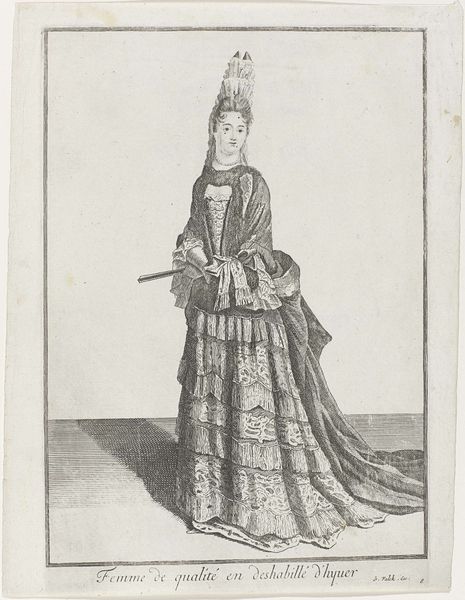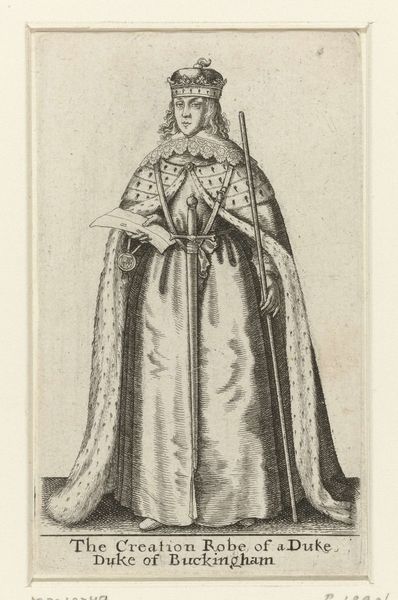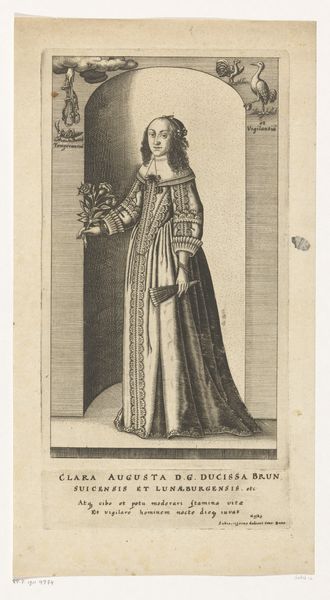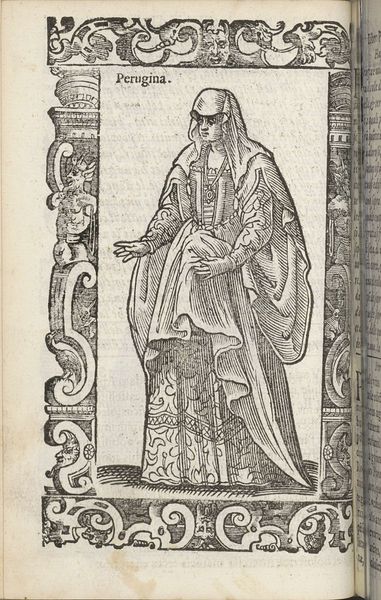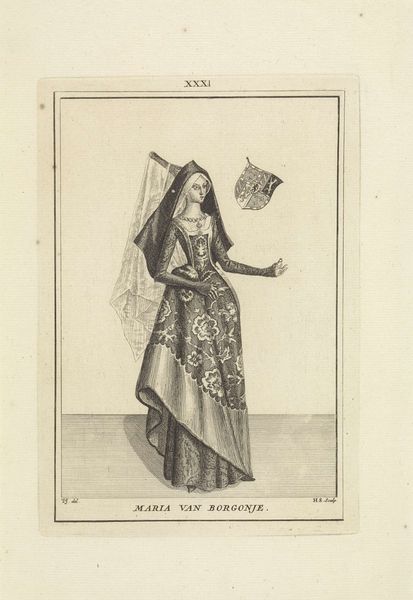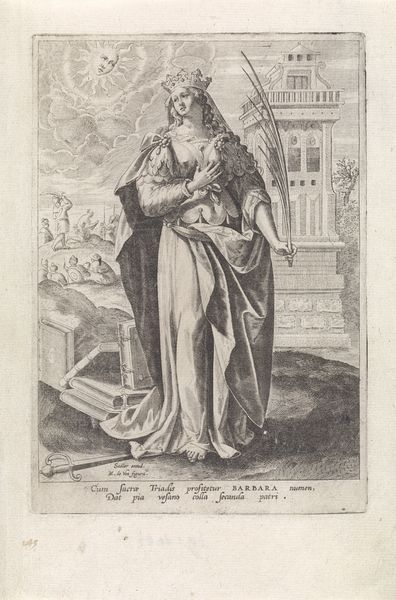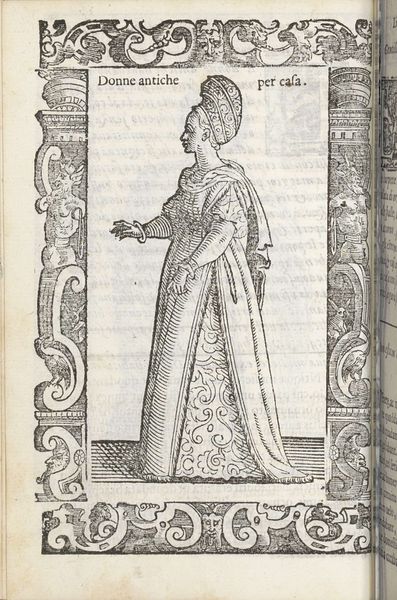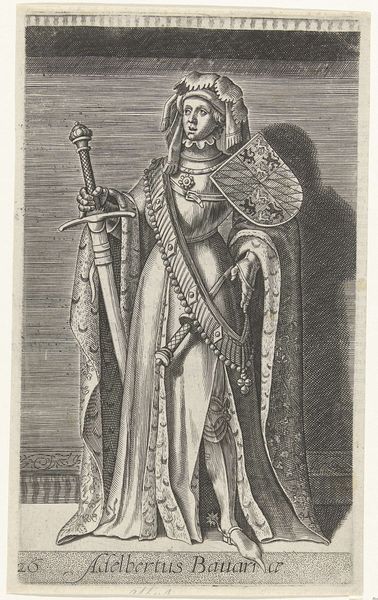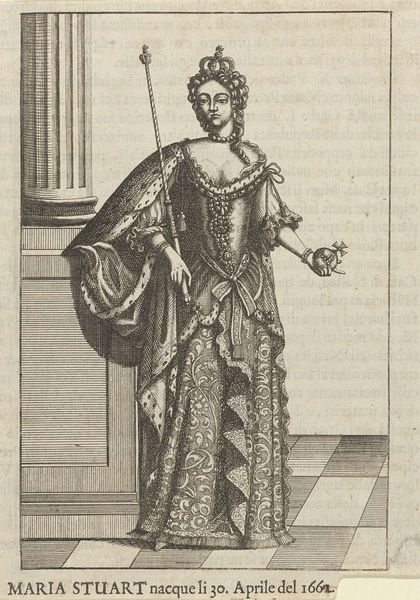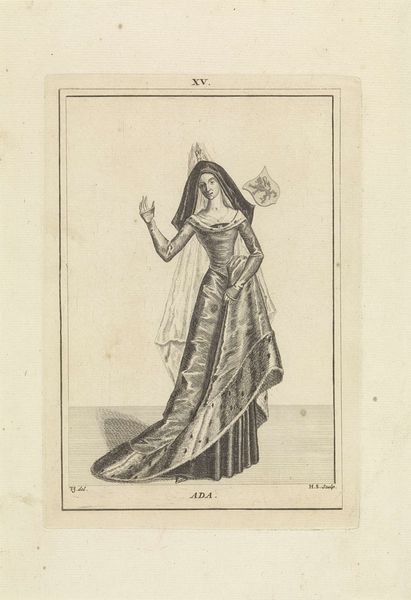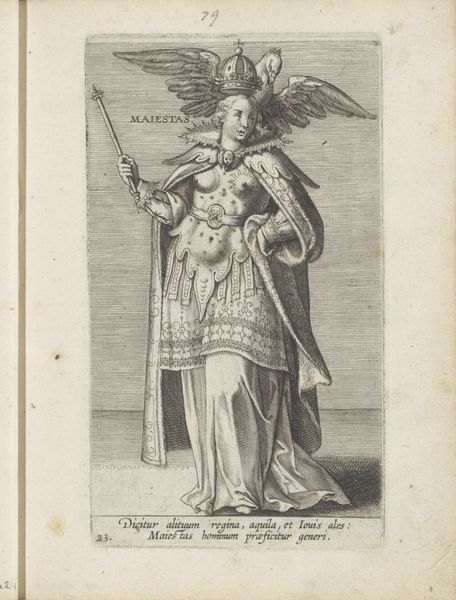
Portret van Jacoba van Beieren, gravin van Holland, Zeeland en Henegouwen 1745
0:00
0:00
hendrikspilman
Rijksmuseum
print, engraving
#
portrait
#
baroque
# print
#
old engraving style
#
history-painting
#
engraving
Dimensions: height 192 mm, width 135 mm
Copyright: Rijks Museum: Open Domain
Editor: Here we have Hendrik Spilman’s 1745 engraving, "Portret van Jacoba van Beieren, gravin van Holland, Zeeland en Henegouwen," which translates to "Portrait of Jacoba of Bavaria, Countess of Holland, Zeeland and Hainaut." There's a formality here, and yet… something playful about that delicate fan or piece of lace she's gesturing towards. What jumps out at you when you look at this piece? Curator: It’s curious, isn’t it? We are confronted with the regal air of Jacoba, meticulously rendered, a queen caught in time, but in such an unlikely medium as engraving, offering almost mass reproducibility, creating a tension, an ambiguity... it feels a world away from impasto portraits hanging in the halls of royal families! And then there’s the symbolic language woven into the baroque style; a hint of impermanence? The black and white drawing offering the suggestion of grayscale lends it to that end in my own perspective... what say you? Editor: I see what you mean about the tension; it’s a portrait meant to convey power and status, but in this relatively accessible format. I’m interested in that ambiguity as well. This kind of rendering humanizes what must have been seen as an unobtainable class. What are your thoughts on its cultural context, considering Spilman was creating this long after Jacoba's time? Curator: Precisely! It makes one ponder: is it reverence or romanticization? The Baroque style provides a certain lens, it elevates Jacoba. And to consider its creation long after her reign suggests that her legacy still resonated, serving perhaps as a reminder of historical ties and power—do you think Spilman felt it an apt nod of acknowledgement? A wink toward the Rijksmuseum's patrons of the time? Or even Spilman's clients? The work does have "Old engraving style," stamped into its DNA, after all. Editor: That is a fun way to think about it—as a wink through time. Thank you for illuminating that interplay for me. Curator: And thank you for helping me to bring that wink into full view, a dance between the grandeur of the past and its more approachable future!
Comments
No comments
Be the first to comment and join the conversation on the ultimate creative platform.
